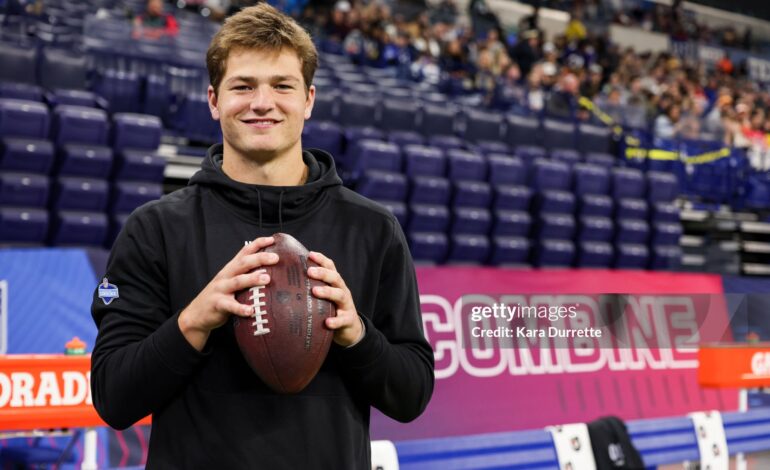Once Lucas Giolito got hurt, the 2024 Red Sox pitching rotation was all but set.
For better or worse, this is the best rotation the Red Sox have sans Giolito, thanks to John W. Henry’s unwillingness to spend.
Sure, there’s a ton of upside for Red Sox pitching coach Andrew Bailey to work with. But Boston didn’t adequately address its starting pitching problems; it’s now down a starter from 2023 with arguably worse depth.
A lot is being asked of Bailey. He has a huge uphill battle to turn these guys into good, productive, quality starters.
His anointment as the savior of this pitching staff was always unreasonably unfair and unrealistic.
2023’s Rotation Problems Unchanged
Embed from Getty ImagesThe 2023 Red Sox rotation pitched the third-fewest innings of any rotation in MLB last season. They were 21st in ERA and 20th in FIP.
Boston used all eight starters they had entering the year, and they were down to three basically from July onward.
Adding multiple durable, quality starting pitchers was on everyone’s offseason to-do list.
Instead, not much improved.
Good-when-healthy Chris Sale was traded and replaced by durable but not-good-since-2021 Giolito, saving a few million bucks, and James Paxton left for LA.
The innings Gio would’ve given could’ve made this group a bit more promising than it is currently despite the lack of attention paid to improving it.
It would’ve been him, Brayan Bello, Nick Pivetta, Kutter Crawford, Tanner Houck, Garrett Whitlock, Josh Winckowski, and Cooper Criswell, with Chris Murphy (likely in the bullpen as a long reliever) and Brandon Walter behind them.
That’s not great, but at least one of Houck/Whitlock would’ve been pushed to the bullpen, which would have strengthened the bullpen.
Gio’s injury leaves the 2024 Red Sox pitching rotation down crucial innings and minus one starter from last year when they needed to add two before doing anything.
Where are those lost innings coming from?
We’ve got Winck, Criswell, and the newly signed Chase Anderson as depth. Murphy is out for 2024, but Walter is still around.
Winck could be a quality starter, but why move him from the bullpen, where he thrived while pitching with a still-unresolved bone chip in his ankle?
Criswell has a 5.97 ERA/4.94 FIP over 37.2 MLB innings (two starts).
Anderson had a 5.42 ERA/5.72 FIP/4.96 xERA last season, with the Rays and Rockies over 86.1 innings (17 starts).
Behind this bunch, we got Wikelman Gonzalez, Luis Perales, and Richard Fitts on the 40-man, none of whom are near MLB-ready just yet.
Given an emergency, I cannot imagine anyone else at Worcester or Portland as a viable MLB option.
2024 Red Sox Banking On Pitching Rotation’s Upside
Embed from Getty ImagesHowever, there are still some things to like about the 2024 Red Sox pitching rotation. This group has a ton of upside.
Yeah, it’s yet another year that the Red Sox use a rotation full of upside. Maybe with a new pitching infrastructure, Boston’ll get something out of them this season.
Bello is entering his second full major league season, coming off an offseason in which he worked with Pedro Martinez. That sinker/changeup combo is deadly already. The key for Bello is to continue developing his slider/sweeper, getting more strikeouts, and just learning to pitch at the MLB level.
Whitlock looked fantastic this spring, showing off his new sinker grip, gyro-slider to complement the sweeper, and bulked-up frame to go with it all. We know Whitlock can start when healthy; he’s just gotta stay healthy. If he stays healthy, this rotation could surprise us. And if they surprise, the Red Sox could make the playoffs after all.
Crawford was the biggest victim of Boston’s poor defensive play in 2023. Part of the reason he averaged only 4.7 innings per start was his teammate’s inability to catch the ball. Case in point: Crawford’s ERA might’ve been 4.04, but his expected ERA was 3.25 (87th percentile).
He also limited hard hits (76th percentile) and walks (75th percentile) at a decent clip.
Crawford’s four-seam fastball (82nd percentile in Run Value) was one of the best fastballs in MLB last year, too.
Nick Pivetta became a different pitcher after adding the sweeper to his repertoire.
From May 21, he pitched to a 3.16 ERA/3.27 FIP, with 141 strikeouts and 31 walks. Opponents had a .597 OPS against him over that span. He ranked second in strikeouts-to-walks (27 percent), fifth in chase rate (36 percent), and third in strikeout rate (34.4 percent) and xWOBA (.265). He also ranked 18th in walk rate (5.5 percent) and 29th in strand rate (76 percent).
The sweeper Pivetta threw primarily to righties, and opponents hit just .114 against the pitch, with a 44 percent whiff rate and 56.5 percent strikeout rate.
If he can be even half as good, that’s a massive boon to the rotation.
Tanner Houck… Is he, or isn’t he? That is the question. We all know his ability and what’s holding him back as a starter. He must throw more strikes and pitch more efficiently to get deeper into games before hitting the third time through. The key to doing all that might be developing that third pitch, a cutter he’s added to his pitch mix this year.
Of course, increased velocity might help as well.
It’s up to these guys themselves, though, to keep up what we saw during spring training.
Andrew Bailey and the new Red Sox pitching infrastructure can only do so much to turn the 2024 Red Sox pitching rotation into a quality rotation.
They certainly can’t keep them healthy. If this starting staff can stay healthier than last year, watch out.
Featured Image Credit: Getty Images/Maddie Malhotra/Boston Red Sox
For daily Red Sox coverage, follow me on Twitter. For more MLB coverage, follow @BellyUpBaseball and check out Belly Up Sport’s other MLB content.






